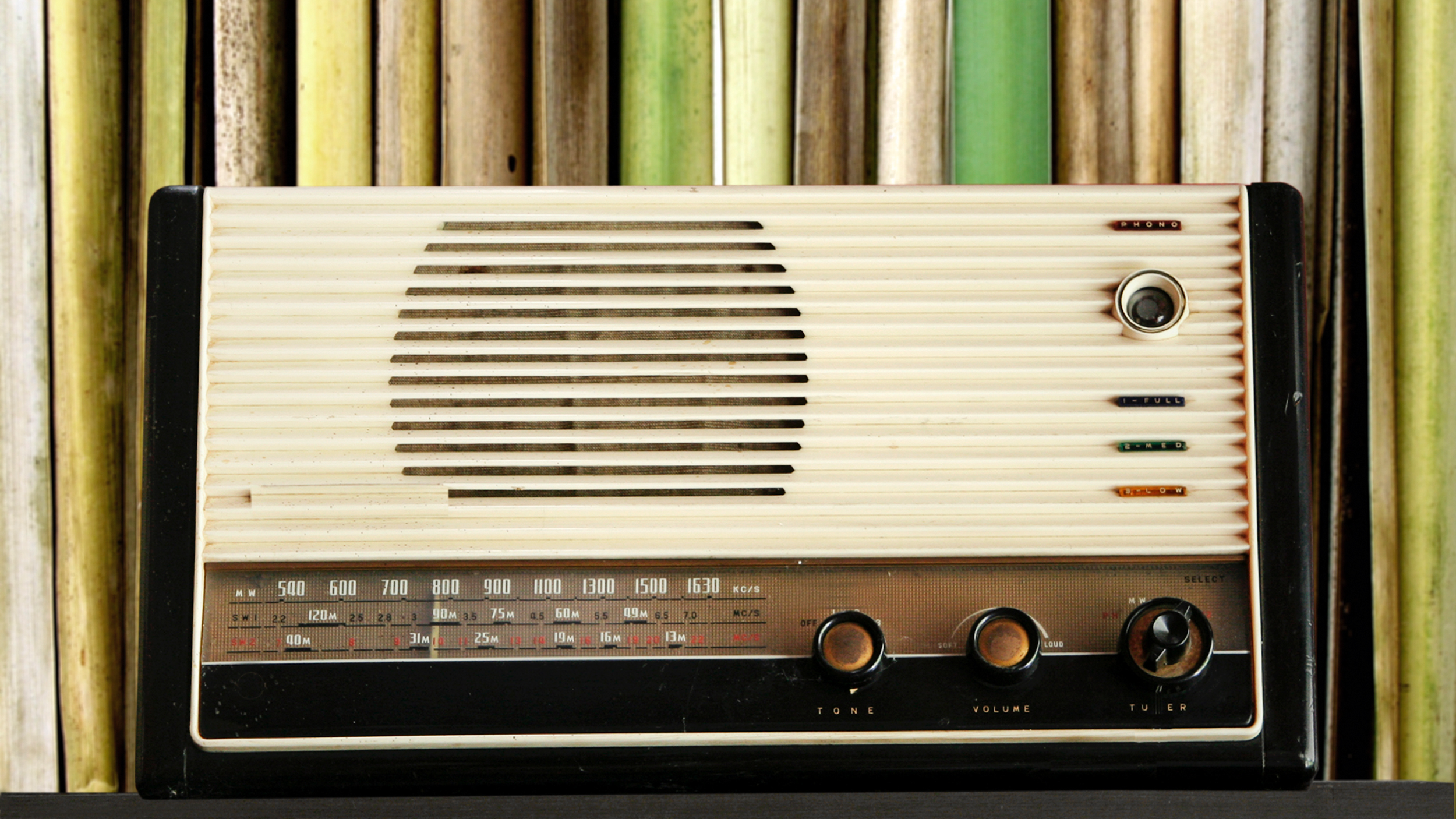This episode was written & produced by Miellyn Fitzwater Barrows.
There's this place right at the border between Detroit, MI, and Windsor, ON where there's this hum… It rattles dishes, makes people sick, it's even making people move away. And the government does not want you to know what's making it. Explore the mystery of the Windsor Hum with the man who is working to get to the bottom of this strange government secret. Featuring documentarian Adam Makarenko.
Adam Makarenko
Zug Island, The Story of the Windsor Hum
Music used in this episode
"Winter Flight" by William Haviland
"Mysteries" by Tim Morris
"The Survivors" by Bryan Steele
Twenty Thousand Hertz is produced by Defacto Sound.
Subscribe on YouTube to see our video series.
If you know what this week's mystery sound is, tell us at mystery.20k.org.
Support the show and get ad-free episodes at 20k.org/plus.
Follow Dallas on Instagram, TikTok, Facebook, and LinkedIn.
Join our community on Reddit.
View Transcript ▶︎
[Music start]
From Defacto Sound, you're listening to Twenty Thousand Hertz... The stories behind the world's most recognizable and interesting sounds. I'm Dallas Taylor. This is the story behind the mysterious Windsor hum.
There’s a place right around the border between Detroit, Michigan and Windsor, Ontario Canada where there’s this hum…
[Hum SFX]
It’s so low. You can’t really hear it at first. And you can’t hear it everywhere. But sometimes, in just the right place, the noise gets so loud that some people’s dishes rattle. [Rattling dishes SFX]
And nobody knows what the sound is… or what’s making it, but it keeps people in the surrounding areas up at night.
It’s known as the Windsor Hum. Listen to it with me…
[Hum SFX]
This is an actual recording of the hum, but we’ve applied some processing to make it more audible. Imagine you had this sound just there all the time. When you woke up in the morning, when you went to bed at night. And the longer you heard it, the louder it got because at some point when you weren’t paying attention you became attuned to it. It became apart of you. Would it drive you crazy? I don’t think I could handle it.
And this isn’t the only place that this happens. They’ve been reported around the world. Everything from animals, machines, to people's own ears and even the gulf stream all have been blamed for hums. But their sources generally remain a mystery. They can cause health problems like head pressure and nausea, difficulty sleeping, stress and changes in blood pressure and heart rate.
Local Resident 1: We moved out from the county and we moved here and I thought, oh, this is a nice quiet neighborhood. And it was in the beginning.
Local Resident 2: It feels like it’s going through your chest.
Local Resident 3: And you get that sick feeling in your stomach.
Local Resident 4: You wake up and you’re wondering did I just have one of those dreams ‘cause you’re feeling this whomp, whomp.
Local Resident 1: And it sounds like a furnace to me that doesn't stop running.
Local Resident 2: People are talking about giving up their properties.
Local Resident 3: During the day the noise is at a certain level. But then at about 6:30 there was this ramping up that took place. It was actually louder at night than it was during the day. So that was amazing to me. When I saw that, I went ‘wow’. It’s a very dangerous place to be.
Local Resident 1: People say how do you like LaSalle? And I say, ‘Don't move here.’
Local Resident 4: There just seems to be a lot more secrecy that happens across the river .
Local Resident 1: I wish we had some answers.
That was from...
Adam: "The Windsor Hum" documentary.
By Adam Makarenko. He’s spent the past three years investigating this mystery…
Adam: When you get there, you don't typically experience anything. You're thinking, "Well, I don't feel the sound. I don't hear the sound. Where is the sound?"
At one point, 22,000 people were complaining about this sound.
Adam: You know it's real. There's no doubt about it. I learned right away that it takes a while before you actually tune in to it and you hear it. It was quite a few months into the documentary where I actually started to feel it. The whole entire ground was vibrating, so I was actually feeling it more than hearing. Since that time, I've definitely been able to pick it up, and I can hear it.
They say it feels like low end bass. A lot of people say it’s like a diesel truck idling outside.
Adam: People have also compared it to somebody driving by which their subwoofers cranked up, and your whole house is vibrating. That's the hearing aspect of it. Then the feeling aspect of it is that you feel vibrations in your body, and you feel vibrations in your home with objects in your home.
Scientists have pinpointed the sound to an industrial island called Zug Island. A steel mill has been running on it since the early 1900s. But the hum didn’t start until 2011.
Adam: Most of that technology of making pig iron, it's called, hasn't really changed that much in the last 100 years. So you go from an island that never made any sounds before, other than just regular industrial sounds, to an extreme sound.
Adam told me that when you look at satellite photos you can see that they’ve actually stripped things down. If the technique hasn’t changed that much over the years then what in the world is going on?
Adam: The equipment's been there, the mill's been there for 90 years. They'll retrofit certain things, but that's not going to change the sound so much that it's going to be that much louder that people's houses are shaking where they never shook before. That's the trick. That's the thing about the whole story.
But nobody can get in there to check things out. The two bridges are heavily guarded and nobody’s allowed to go on the island who doesn’t work there. So, no scientists, no residents, no documentarians, no reporters, no one has been able to get close to this sound.
Adam: The thing about that area is that it's governed by Homeland Security and who knows who else.
That’s right. Homeland Security. It’s at the U.S./Canada border. It’s situated on the Detroit River – so one bank is America’s Zug Island and the other bank belongs to Windsor, Ontario, Canada. The river ranges from half a mile to two and a half miles wide, so I guess people could swim across there or something, but the undertow is brutal and it’s a very busy waterway. So, again, why Homeland Security? We’ll investigate that further, after the break.
[music out]
MIDROLL
[music in]
Scientists were able to pinpoint the source of the Windsor Hum to an industrial island called Zug Island. But no one has been able to investigate, because the area is governed by Homeland Security. Why would they be so interested in an industrial island?
Adam: Well, the one thing in a logical explanation, Homeland Security's there because it's one of the busiest international border crossings for North America, the Windsor/Detroit corridor, so you're going to get a lot of security.
But it’s a private industrial island. We dig into the Department of Homeland Security website and came across a place where you can look up ports of entry. We searched Michigan and there are eight listed for the state. Only two were actually in Detroit. One is DTW, Detroit Metropolitan Airport, the other is just called Detroit, which is on West Fort Street. The Detroit Port of Entry is four miles away from Zug Island and DTW is 15.
Also, there are tons of other islands on the Detroit River, like Belle Isle Park, which is actually a park with an aquarium, zoo, racetrack, and yacht club among other things. And Elizabeth Park which has a marina, baseball field and river walk. Definitely the kinds of places that people are welcome to visit freely, so why would Zug Island need so much security and why won’t they talk about this sound?
Adam: For me, the real mystery behind it is why is it such a secret that you can't talk about what this sound is? I mean give me a break. Why is it such a big secret? Why can't no one talk about the sound and figure out how to fix it? It wasn't there before. Now it's there, so obviously something's happened. You should be able to fix it. Unless, maybe the problem's so big that it can't be fixed. Who knows? That's where the mystery is.
I did take a look at the aerial view on Google Maps and it kinda looks like a dingy old train station… I was hoping to find military vehicles, or lots of weird structures, or even just for it to be blocked out altogether. There weren’t and it wasn’t.
It probably is just some sort of new iron-making process. Maybe it’s proprietary and that’s why they won’t let people on the island, who know. Or maybe it’s an underground covert military intelligence site scanning for evidence of dirty bombs or even more mysterious, it could be ghosts.
In the 1870s and 80s, it was systematically destroyed by relic hunters and development. Maybe something happened in 2011 to disturb them? Like a steel worker found a relic and stuck it in their pocket and took it home causing the spirits to rattle their cage, so to speak. Or, maybe it’s aliens.
Hey, if they won’t let us onto the island, we can speculate however we want.
Twenty Thousand Hertz is presented by Defacto Sound, a sound design team dedicated to making television, film and games sound insanely cool. Find out more at defactosound.com. This episode was produced by Miellyn Fitzwater Barrow and me. With help from Sam Schneble. It was sound designed and mix by Kenneth Gilbert and Colin Devarney.
Our artwork is by Mast and our website was developed by Pocketknife. Special thanks to Adam Makarenko for speaking with us and for letting us use a portion of his documentary called Zug Island, the story of the Windsor hum. Learn more at adammakarenko.com. For more information about us and to subscribe visit the website at 20k.org. If you have a cool idea about what we should be covering or just want to say hey, drop us a line at hi@20k.org. We’d love to hear from you.
Finally, we could use some help getting the word out about this podcast. If you wouldn’t mind, take a moment and give us a review in iTunes or let someone know about the show. Thanks for listening.








